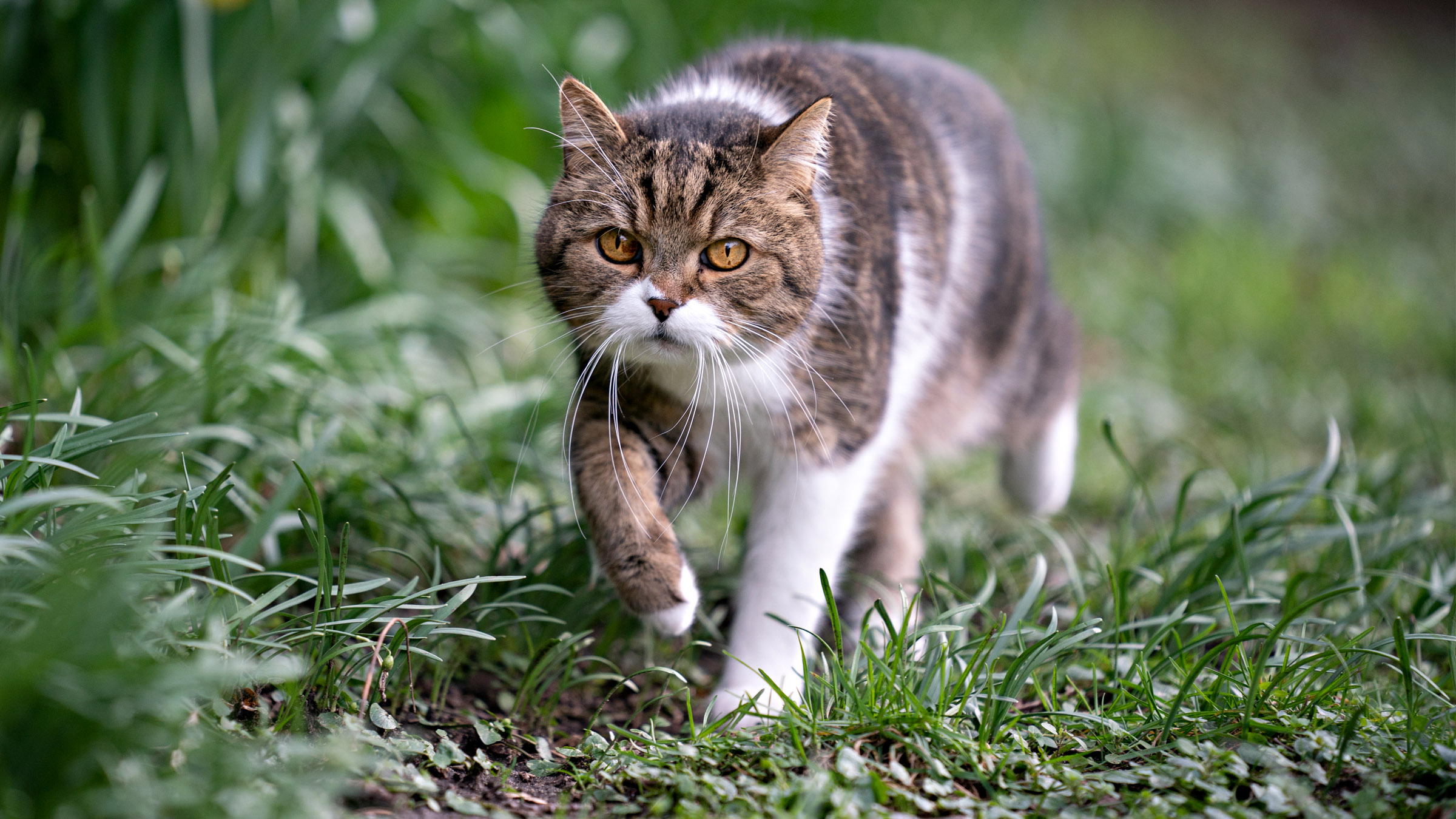Osteoarthritis check
The health of your four-legged friend is important to you and you don't want to miss any changes in behavior. But what is still normal and when should you talk to your veterinarian? The following questions should help you to assess your four-legged friend's symptoms more accurately and provide a good basis for discussion at your next veterinary appointment.

1. Is your cat no longer jumping or not jumping as high?
When jumping, your cat has to use a lot of force from its hind legs. If your cat is in pain or is generally less flexible in its hind legs, lumbar spine or hips, jumping can cause problems. Sometimes cats avoid certain movements completely for this reason. If you notice, for example, that your cat suddenly ignores its otherwise very popular, elevated sleeping places, you should take note.
2. Do you feel that your cat is walking more slowly?
There can be many reasons for slower walking. If it is very warm outside, for example, this seems obvious. However, if your cat walks slowly for a long time or repeatedly, moves sluggishly or you notice other new behaviors, you should take these symptoms seriously. It is best to have your cat thoroughly checked by a veterinarian.
3. Does your cat find it difficult to climb stairs or does it avoid them?
When climbing stairs, either a lot of weight is placed on the front legs (downwards) or the hind legs have to provide the necessary thrust (upwards). This can be very uncomfortable if the joints are stiff or painful. Due to the reduced mobility, cats often find everyday movements more difficult or avoid them completely. Pay attention to little things like this so that you can support your four-legged friend at an early stage.
4. Have you noticed that your cat is playing less or sleeping more?
Especially when playing, cats often make sudden movements, such as jumping while still turning. These movements during play can be very uncomfortable for your cat if it has pain in certain joints or in its back. Some four-legged friends lose their urge to play or sleep a lot as a result. Without examination, it can be difficult to tell whether your cat is simply becoming calmer in line with its age or is in pain. You know your cat best, so listen to your gut feeling - it is better to react too early rather than too late.
5. Does your cat suddenly shy away from interaction with other cats or people?
Cats that suddenly become more withdrawn, no longer go outside or shy away from contact with their partner are clearly exhibiting behavioral problems. Although this can have many causes, there is often pain behind it. In this case, it is always worth taking a closer look!
6. Does your cat avoid the litter box and is unclean as a result?
This symptom is usually only noticeable in indoor cats. If your cat suddenly urinates/defecates next to the toilet or in unusual places or if your outdoor cat suddenly defecates and urinates in the home, this should always be taken seriously. Restricted mobility or pain in the hind legs, hips or spine may mean that your cat is unable to do its usual business or can only do so with pain. Some cats also find it difficult to go to the toilet. So don't be angry if something goes wrong. This is your cat's way of letting you know that something is wrong.
7. Does your cat groom itself less or does its coat suddenly look unkempt?
If you watch cats grooming, you sometimes get dizzy just looking at them. Cats are very agile and some movements are no problem when they are young. However, with reduced mobility in old age, these movements can become increasingly challenging. If pain is added to this, some cats avoid these movements completely. As a result, grooming also suffers and some areas of the body can no longer be cleaned. If the whole coat suddenly looks unkempt, your cat has probably stopped grooming completely. This is a clear indication of pain or other illnesses and a visit to the veterinarian is very important in this case.
8. Is your cat anxious, aggressive or showing other conspicuous behavior?
Cats that suddenly become more withdrawn, suddenly react very anxiously or become aggressive towards people or other animals in situations in which they were previously relaxed should be taken to the veterinarian urgently. The change in behavior can have many causes, but pain is often behind it. So always take such changes seriously!
Result
Did you answer "Yes" to 2 or more questions?
The observed changes may be a sign of osteoarthritis or another disease in your cat. Please talk to your veterinarian and describe your observations - for the sake of your pet.
Tip: ask your veterinarian about the natural veterinary medicines from Heel Vet.


